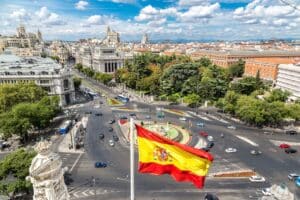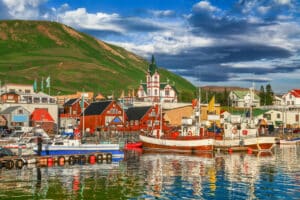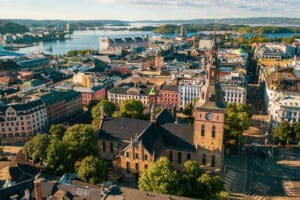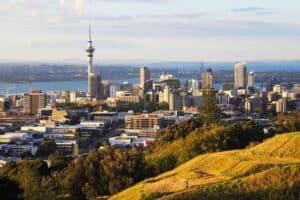Slovenia, a little country sandwiched between the Alps and the Adriatic Sea, is one of the safest spots in Europe. Your main worry here would be slipping into a serene trance while gazing at the beauty of a tranquil lake, majestic castle, cascading waterfall, or the snow-capped peaks of the Alps.
Navigating this country isn’t rocket science, but being aware of what might cause a hitch in your trip can definitely add to the enjoyment of your travels. So let’s jump right on that, shall we?
Is Slovenia Safe?

Slovenia shines as one of the safest places globally, ranking 8th on the esteemed Global Peace Index. It stands shoulder-to-shoulder with nations like Iceland, Ireland, New Zealand, and Portugal, as well as Austria, Denmark, and Singapore.
But Slovenia’s accolades don’t end there. The Government Communication Office proudly announced that Slovenia ranks fifth in Europe for the best standard of living in 2024. The Netherlands-based organization Green Destinations named Slovenia as the world’s first green country. Condé Nast Traveller has consistently named Slovenia one of the top 10 sustainable destinations, with Ljubljana earning the title of Green Capital of Europe by the European Commission.
Slovenians really care for their green spaces dear, and you’ll see the proof when you visit.
Now, while crime in this green paradise is rare, there’s still a slim chance of petty theft. So, as everywhere, exercise caution, use common sense, and be aware of your surroundings (with all that foliage around, trust us, you’ll enjoy it).
- International travel advisories: Level One, practice normal safety precautions
- Crime rating: 24.05
- Most common crime that affects tourists: Petty crimes (pickpocketing and bag snatching)
- Public transportation safety: Pretty organized, reliable, and safe, but keep an eye on your belongings just in case
- Road safety: Main roads are generally well-maintained and safe, but can get jam-packed during rush hours, weekends, and peak tourist months
- Safety walking alone during the day: Very safe
- Safety walking alone during the night: Safe
- Beach safety: Most of the beaches are safe, featuring showers, easy access, and lifeguards on duty
- Common natural disasters: Storms, wildfires, earthquakes, and avalanches
- Carbon monoxide poisoning: No reported incidents
- Police presence: Extensive, covering all corners of the country
- Medical care quality: Healthcare is very good, but may be pricey, so purchase travel insurance that will cover any potential medical treatment and hospital stays
Travel Advisory for Slovenia
According to travel advisories of the United States, United Kingdom, Canada, Australia, and New Zealand, Slovenia is rated as one of the safest countries, falling under the “Level One” category.
While visiting Slovenia, it’s wise to stay alert for petty crimes, although they’re not very common. Violent crime is even rarer here, so your trip should be smooth sailing.
International travel advisories encourage “Practicing Basic Safety Measures” everywhere you go—like parking in secure areas, using ATMs in malls rather than on the street, double-checking your bills, and never leaving your belongings unattended.
Overall, Slovenia receives a thumbs-up from international travel advisories. The authorities have faith in the country’s safety, but it’s always smart to stay cautious and follow basic safety guidelines.
A Comprehensive Look at Slovenia Crime Rates
Slovenia’s crime rating sits impressively low at 24.05, with locals and tourists hardly losing any sleep over car thefts, assaults, insults, or harassment, as per Numbeo.
In 2023, Slovenian police handled 54,017 criminal offenses, marking a more than a tenth increase over the previous year and mirroring pre-pandemic levels. This uptick extended across all areas compared to the five-year average, with juvenile crime rising by 26% and organized crime by 18%.
When it comes to organized crime, Slovenia shines with a commendable score of 4.3 on the Organized Crime Index. This positions the country as the top destination in Central and Eastern Europe with the lowest presence of organized crime.
| Safety Concerns | Crime Rate | Status |
| Overall Crime Level | 16.37 | Very Low |
| Crime Increasing in the Past 3 Years | 53.15 | Moderate |
| Home Break-Ins and Thefts | 21.76 | Low |
| Mugging and Robbery | 16.54 | Very Low |
| Car Theft | 16.49 | Very Low |
| Theft from Vehicles | 24.80 | Low |
| Personal Attacks | 17.41 | Very Low |
| Verbal Insults | 19.06 | Very Low |
| Racial, Ethnic, Gender, or Religious-Based Attacks | 14.40 | Very Low |
| Drug Use and Dealing | 34.17 | Low |
| Property Crimes (Vandalism and Theft) | 31.37 | Low |
| Violent Crimes (Assault and Armed Robbery) | 17.73 | Very Low |
| Corruption and Bribery | 54.50 | Moderate |
| Safety Walking Alone in Daylight | 87.12 | Very Safe |
| Safety Walking Alone at Nighttime | 74.47 | Safe |
Source: Numbeo, 2024 data based on 530 contributors.
Personal Crime in Slovenia
In Slovenia, tourists hardly ever encounter personal crimes, so you can relax and enjoy your trip without worrying about harm or threats.
Solo female travelers might occasionally get some unwanted attention, like whistling or cat-calling in bars or clubs. But overall, locals are respectful, and such behavior is pretty uncommon. Slovenia actually ranks 21st in the world for having the happiest locals, and where people are happy, rude behavior is rare.
Even solo tourists should enjoy their trip without worrying about personal attacks, as Numbeo reveals that the country is safe for solo explorers to stroll around, day or night. Nevertheless, we always advocate that no matter where you are, it’s always smart to be a bit more careful after the sun sets, as nightlife can bring its own set of challenges, like overly enthusiastic partygoers and a slightly higher risk of crime activity.
We would only advise higher caution in Ljubljana’s (somewhat) autonomous area called Metelkova, where you can enjoy alternative culture, graffiti, and the company of underground artists. On the other hand, you may come across squatters, drug users, and locals who aren’t so happy to see tourists—so if you do visit, go during the day and don’t take pictures of people!
In the end, your safety boils down to your own behavior. If you’re out late and not being respectful towards your surroundings, you might increase your chances of getting into trouble. So, it’s just common sense to show respect wherever you are, whether it’s in Slovenia, Norway, Spain, Switzerland, or elsewhere.
Property Crime in Slovenia
In Slovenia, property crime is more common than personal crime. While the chances of falling victim to property crime are still very slim, it’s essential to safeguard your belongings while vacationing here.
According to the Canadian travel advisory, pickpocketing and bag snatching are most common in:
- Tourist hotspots
- Hotels
- Restaurants
- Bars
- Public transportation
- Airports
- Railway stations
To protect yourself, the Slovenian police offer the following advice:
- Always keep your car locked and windows closed, and park in well-lit, protected areas at night. Avoid leaving valuables visible inside.
- Store valuables in a locker, safe, or another secure alternative. Tourist accommodations are usually less secure than your home.
- Carry only the cash you need for the day and avoid displaying large sums in public.
Remember, your personal safety should always come first. So if someone tries to rob you, don’t resist. Instead, try to recall details such as the scene, the assailant’s appearance, clothing, escape direction, and vehicle registration number, and immediately report the incident to the police.
Police Presence in Slovenia
The police force in Slovenia is quite present throughout, covering all corners of the country. You can spot them at various police stations, including border police stations, traffic police stations, the airport police station, and even stations for service dogs and mounted police.
Their vehicles, uniforms, and symbols are easily recognizable, so you can easily identify them when needed. You can call the police by dialing 113, a number you should keep handy for immediate help in case of accidents, theft, or any other incidents.
Public Transportation Safety in Slovenia
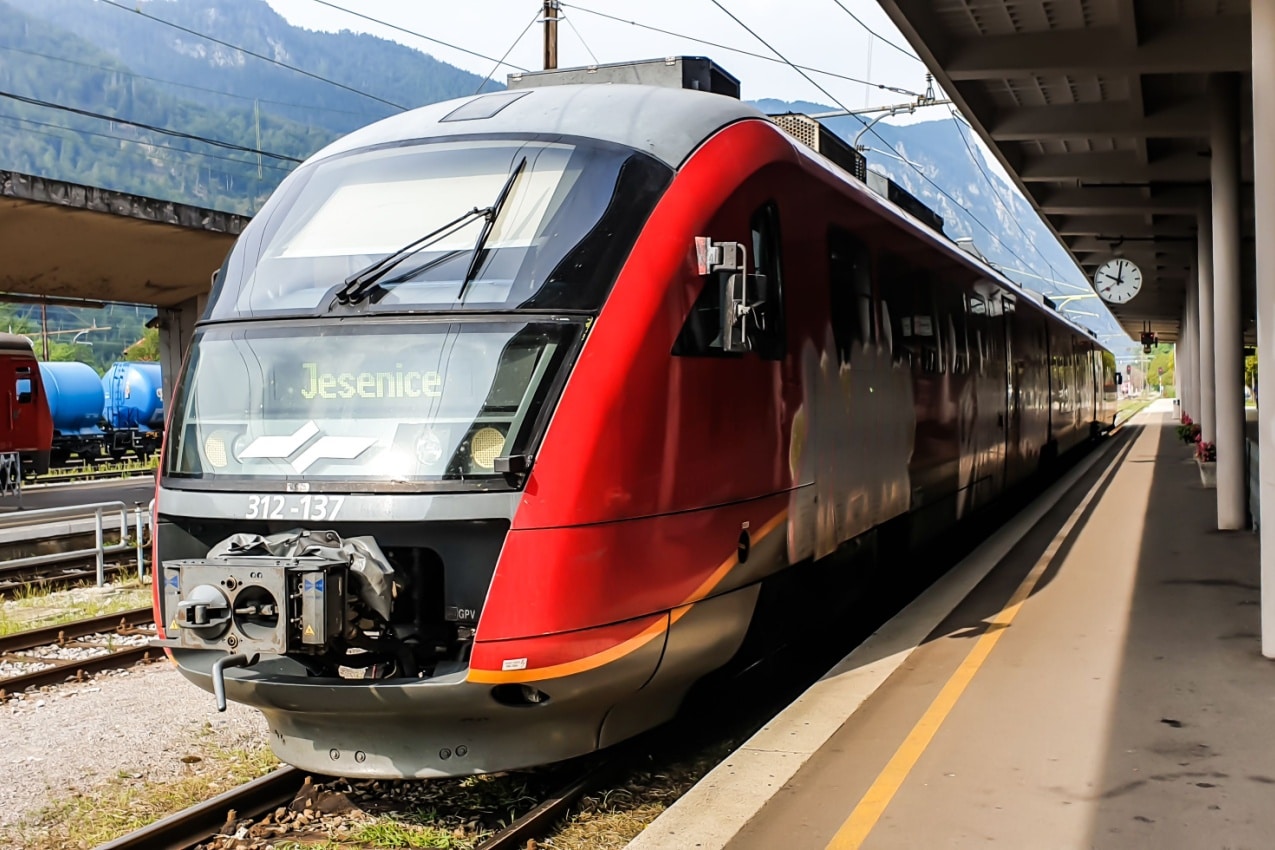
Public transport in Slovenia is pretty organized and reliable, making it easy to hop between cities and even reach those off-the-beaten-path spots.
For train info, you can check out the schedule and rail map on the Slovenia Railways website. You can purchase tickets online or at the train station.
As for buses, you can check the routes and tickets on the website of Ljubljana Passenger Transport. Buying tickets is pretty straightforward as well—either purchase one online, at the bus station, or pay the driver directly. Prices vary depending on how far you’re going and the type of bus.
When you hop aboard, watch out for pickpockets, especially in crowded buses and trains. And remember to check the schedule—public transport runs on a timetable, so you’ll want to be on time. And if you’re bringing along a dog, make sure you follow the rules—leash and muzzle are required.
Road Safety in Slovenia
Slovenia’s main roads are generally well-maintained and safe. But when summer rolls around, or during rush hours and weekends, popular routes may get pretty jam-packed.
Additionally, you might encounter speedsters zipping around the streets—and very rarely—car thieves around gas stations and parking lots.
To keep your car safe:
- Lock your car and close your windows.
- Keep your valuables out of sight, even if you’re just popping into a shop for a second.
- If you’re parking overnight, aim for a spot in a secure parking area.
Now, when it comes to driving rules:
- Stick to the right side of the road.
- Speed limits vary, but generally, it’s around 50 km/r in towns (around 31 mph) and 100-130 k/h on highways (62-81 mph).
- No chatting on your phone while driving.
- Buckle up, folks. Seatbelts are a must.
- Watch out for cyclists in town, especially in Ljubljana.
Medical Care Quality in Slovenia
Medical care in Slovenia is very good. Statista placed Slovenia as the 16th best European country for healthcare in 2023, while CEOWorld ranked it as the 33rd best globally in 2024.
Here are some of the top hospitals in Slovenia:
- University Medical Centre Ljubljana, Ljubljana—Contact: 00 386 (0)1 522 3700 / 00 386 (0)1 522 9244
- Children’s Hospital, Ljubljana—Contact: 00 386 (0)1 522 5050
- University Rehabilitation Institute, Ljubljana—Contact: 00 386 (0)1 475 8100
- University Psychiatric Clinic, Ljubljana—Contact: 00 386 (0)1 475 8100
- Izola General Hospital, Izola—Contact: 00 386 (0)5 6606 000
- Jesenice General Hospital, Jesenice—Contact: 00 386 (0)4 5868 000
- Community Health Centre Kranj, Kranj—Contact: 00 386 (0) 4208 2000, 00386 (0) 4208 2110
Medical treatment in Slovenia can be pricey, so it’s essential to have travel insurance that will cover your medical treatment and hospital stays. Some good options include AXA’s Schengen Travel Insurance, Insubuy, Allianz Travel, Travelex, Generali Global Assistance, and World Trips.
Is It Safe to Travel Solo in Slovenia?
Slovenia is a great destination for solo adventurers, with its safe rail networks, walkable town centers, and low crime rates.
The Independent even ranked Slovenia among the top 10 best countries for solo travel. And according to the experts of The Big 7 Travel, it’s one of the safest destinations for solo female travelers—coming in third globally!
But, when traveling solo, it’s always wise to be a bit cautious. Keep your valuables close, stick to well-lit areas, and avoid walking alone in isolated places. And don’t forget to practice a few local phrases—it’s a great way to connect with locals. For instance, dober dan means good day, pro sim is please, and hvala is thank you.
Solo travel essentials like printed documents, portable chargers, emergency cash, and travel insurance are also a must. And if you’re a social butterfly, consider staying in a hostel—it’s an excellent way to meet new friends along the way. You can also try the group-meet features on apps and websites.
Perils of Nature: The Risk of Natural Disasters in Slovenia
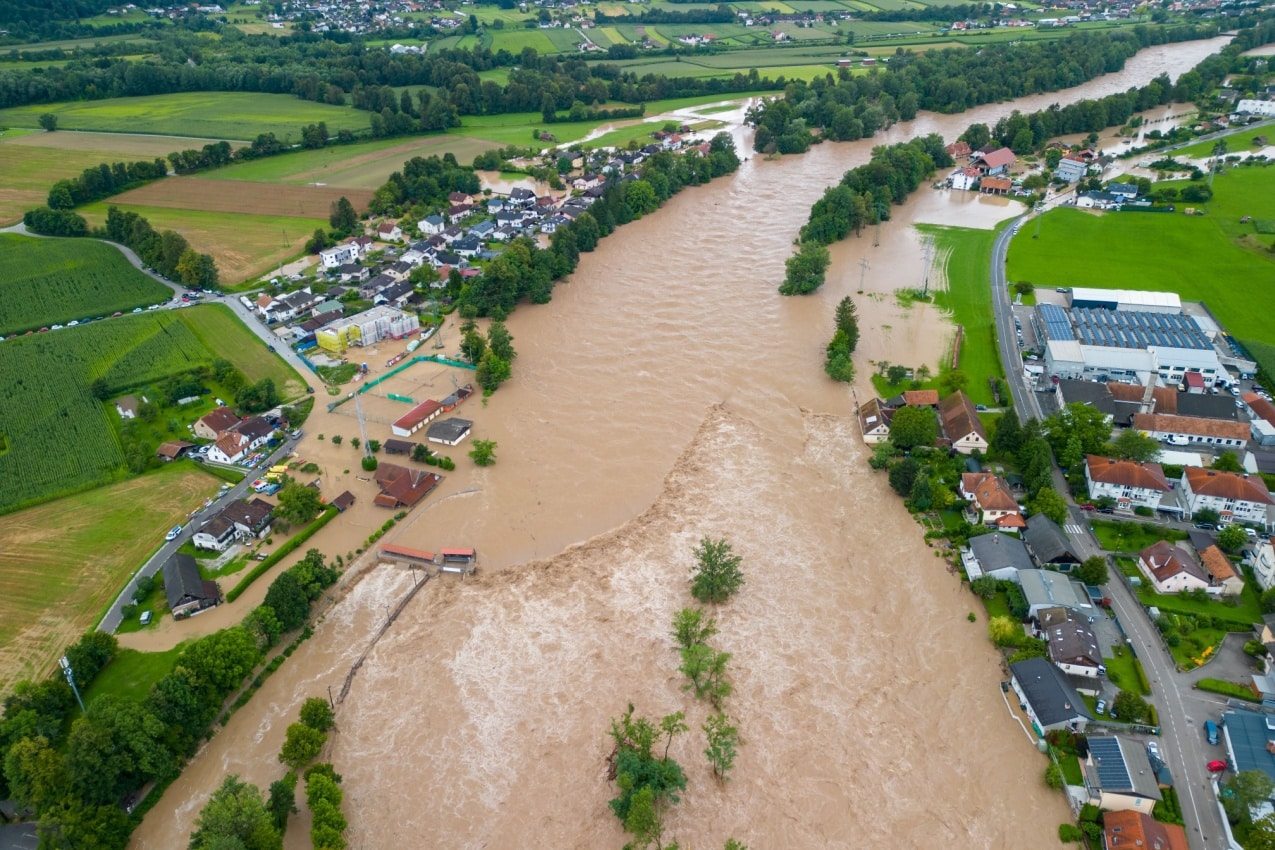
Slovenia occasionally faces four natural disasters: storms, wildfires, earthquakes, and avalanches.
Storms
Back in August 2023, intense rainfall led to severe flooding and landslides all over the country, causing damage to homes and roads. Surely many tourists visiting at that time were disappointed to be stuck indoors until the weather cleared.
To make sure a major storm doesn’t spoil your trip, remember these tips:
- Keep an eye on the local weather forecasts.
- Pay attention to the advice given by local authorities, including any evacuation orders.
- Plan some indoor activities just in case you get stuck inside during bad weather.
Wildfires
On 17 July 2022, wildfires erupted in the Karst region on the Italy–Slovenia borders. The wildfires spread until 20 July, leading to evacuations in several villages and marking the largest wildfire in recent decades in Slovenia.
While we all enjoy the summer sun, prolonged hot weather can increase the risk of wildfires, so here’s what you can do to stay safe:
- Consider booking accommodations in urban areas rather than forest regions.
- If you choose a more natural setting, keep an eye on local media for any reports of high temperatures that could potentially ignite wildfires.
- If a wildfire occurs, evacuate promptly (people with respiratory issues are at highest risk).
Earthquakes
Slovenia sees its fair share of earthquakes. Between March 27-April 3, 2024, there were 69 quakes, including:
- 1 above a magnitude of 4
- 5 between magnitudes of 2 and 3
- 63 below a magnitude of 2, which is typically not felt by people
Bigger quakes, above magnitude 6, happen roughly every 15 to 20 years, so they’re pretty rare. Still, it’s good sense to be prepared, even if big quakes don’t happen often.
If you feel the ground shaking, remember:
- Drop to the ground.
- Take cover under something sturdy.
- Hold on until the shaking stops.
Avalanches
In April 2023, a serious incident occurred at the popular ski center Mala Mojstrovka in Slovenia when an avalanche swept away seven people. It’s a reminder that even the most thrilling winter terrain can also be the most risky.
If you’re into winter sports, here are some tips to stay safe:
- Keep an eye on avalanche forecasts, especially if you’re skiing or doing other mountain activities.
- Avoid hiking right after a snowstorm, as most avalanches happen during or soon after heavy snowfall.
- Steer clear of steep slopes with angles greater than 25 degrees.
- Be cautious of treeless slopes and gullies, as they may indicate past avalanche activity.
- Keep an eye out for cracks or small slabs on the surface, and avoid these areas altogether.
Beware the Silent Threat: Carbon Monoxide Poisoning in Slovenia
When we plan vacations, we often focus on staying safe from typical dangers like theft, but there’s another risk that often slips under the radar—carbon monoxide poisoning.
Carbon monoxide (CO) is an invisible and odorless gas that can leak in hotels and accommodations from faulty or poorly ventilated appliances, heating systems, and boilers.
Slovenia hasn’t had any carbon monoxide incidents yet, but it’s still a risk, especially since there’s no rule forcing hotels to set up carbon monoxide detectors. If hotels don’t have it, it’s even less likely that an Airbnb will offer this crucial safety feature.
That’s why we encourage you to bring your own portable carbon monoxide alarm. They’re affordable and compact, and if your accommodation already has one, that’s even better.
Serenity by the Shore: The Safety of Slovenia Beaches
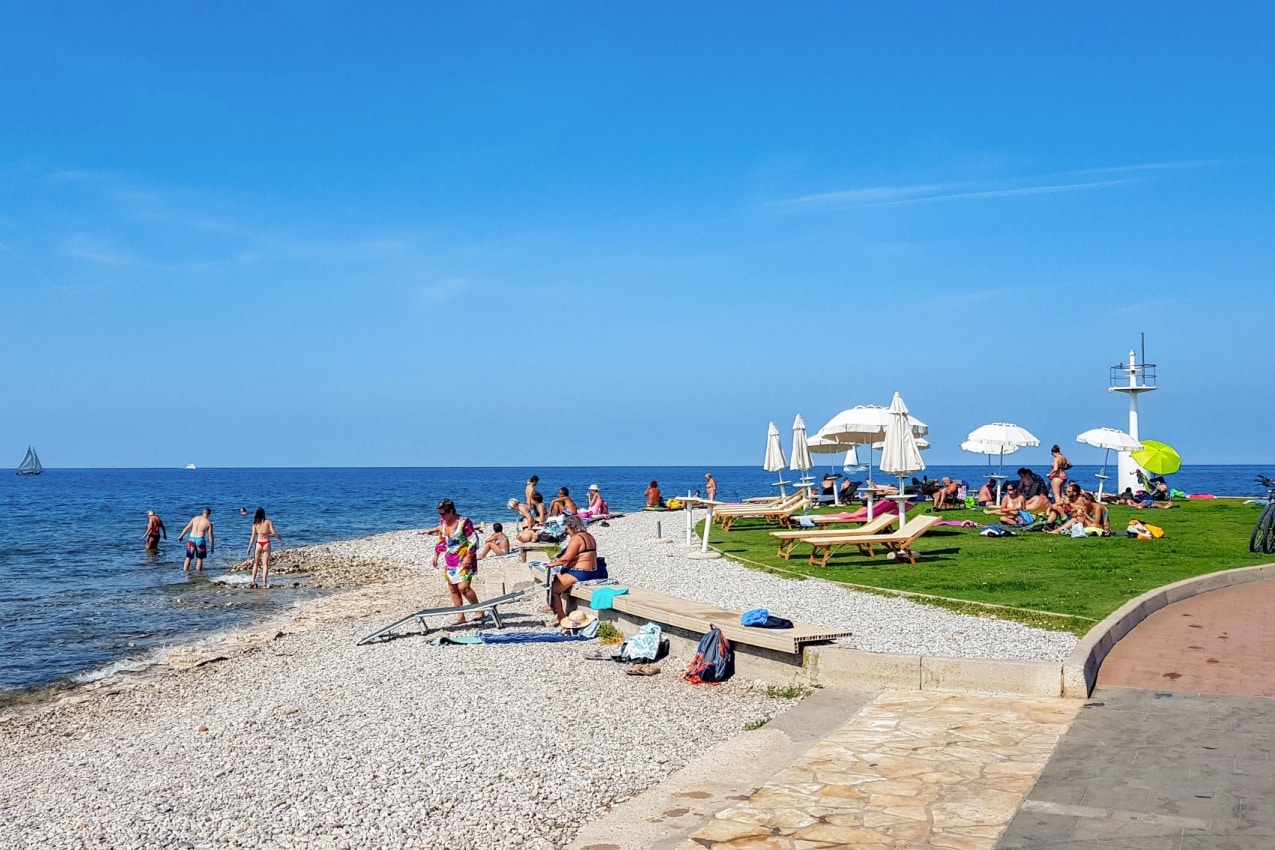
Slovenia’s coastline is full of safe and scenic beaches. The popular beaches often come equipped with amenities like showers, easy access, and lifeguard services, while the more secluded ones offer nothing but unspoiled natural beauty.
Look out for blue flags, which signify beaches certified by the Foundation for Environmental Education (FEE) for meeting high environmental, safety, and quality standards. Slovenia boasts 11 Blue Flag beaches, including Koper Mokra Beach, Izola Svetilnik Beach, Izola Delfin Beach, Portorož Beach, and more.
Other seaside gems worth exploring in Slovenia include:
- Ankaran Beach
- Strunjan Beach
- Bele Skale Beach
- Medusa Beach
- Piran Old Town Beach
- Beach San Simon
- Žusterna Beach
- Mesečev Zaliv Beach
- Fiesa Beach
And the best wild beaches for swimming include:
- Kozjak Waterfall
- Lake Bled
- Vintgar Gorge
- Lake Bohinj
- Soča River
- Nadiza river
Remember, your safety while sunbathing or swimming depends on your actions, too. So make sure to keep your valuables secure, avoid venturing into deep waters if you’re not a confident swimmer, and steer clear of turbulent waves. Shark attacks in the Adriatic Sea are exceptionally rare, but not unheard of, so avoid swimming during dawn or dusk, as this is when sharks may be more active in search of prey.
Slovenia Weather Patterns: What to Expect
Slovenia’s got a bit of everything when it comes to climate.
Down on the coast, places like Maribor enjoy a Mediterranean climate. That means winters are cool, around 32°F (about 0°C) in January, while summers are warm and sunny, hitting about 79°F (about 26°C) in July.
Head northwest to the mountains around Lake Bled, and you’ll experience an alpine climate—which means cold, snowy winters around 32.9°F (about 0.5°C), and summers that are pleasant but not too hot, with a chance of some light storms.
The rest of the country, including the northeast and central regions where you’ll find the capital, Ljubljana, has more of a continental climate. Summers are sunny and warm, while winters are cold.
The Weather in Ljubljana: What to Expect
Summer in Ljubljana stretches from June to September, bringing toasty temperatures averaging above 72°F (about 22.2°C). July is the hottest month, hitting around 80°F (about 26.7°C) during the day.
It’s cold from November to March, with temperatures often dipping below 47°F (about 8.3°C). January is the coldest, with lows around 26°F (about -3.3°C). February, on the other hand, gets pretty windy, so pack those warm layers.
If you’re a fan of sunshine, you’ll love summer—clear skies dominate, especially in July when the skies are clear 69% of the time. But if you don’t mind the cold while sightseeing, October to May is your time. This is also when the clouds roll in, especially in November, when it’s overcast about 62% of the time, making it the gloomiest month of the year.
Rain falls year-round, but September sees the most of it, with around 3.8 inches (about 9.7 centimeters) on average. January, on the flip side, is relatively dry, with just 1.4 inches (about 3.6 centimeters) of rain.
Snowfall blankets Ljubljana from November to March, especially in January when the city gets around 3.1 inches (about 7.9 centimeters) of snow.
And if you’re planning your sightseeing, keep in mind that days are the shortest in December, with around 8 hours and 40 minutes of daylight, while June gives you the most daylight to explore, with up to 15 hours and 45 minutes!
Monthly Average Temperatures in Ljubljana
| Month | Fahrenheit (°F) | Celsius (°C) |
| January | 32 | 0 |
| February | 34 | 1.1 |
| March | 42 | 5.5 |
| April | 50 | 10 |
| May | 59 | 15 |
| June | 65 | 18.3 |
| July | 69 | 20.5 |
| August | 68 | 20 |
| September | 60 | 15.5 |
| October | 51 | 10.5 |
| November | 41 | 5 |
| December | 33 | 0.5 |
Source: WeatherSpark, 2024 data
When Is the Best Time to Visit Slovenia?

The prime time to explore Slovenia is from May to October, when the weather is just right for outdoor adventures.
Late spring (May) has the best of both worlds—no summer crowds and no chilly winter temperatures. Plus, you’ll find lower prices on flights and hotels, making it a win-win! April can also be a great time to visit, but check the forecast as it can get rainy.
Come summer, Slovenia enters the peak tourist season, especially along the coast. There are hardly any rainy days to spoil the fun, and when the summer heat seems like too much, the high mountains are the go-to cool escape. Just be prepared for higher prices during this peak season.
As summer ends, the crowds thin out, but the warm days linger on. September and October would be another option for snagging a good deal on flights and hotels, but enjoying good weather and a lively atmosphere at the same time.
Winter is the low season, and while it can be cold, cloudy, and rainy, it’s the perfect time for snow enthusiasts to hit the slopes. Even if skiing isn’t your thing, you can soak up the festive atmosphere at the Christmas market in Ljubljana or enjoy milder winter temperatures along the coast. Just keep in mind that prices for accommodations may still be high due to the popularity of winter activities and wellness centers.
How to Stay Safe in Slovenia
- Wearing flashy jewelry while exploring Slovenia might catch some attention, but it’s not the kind you want. While someone snatching your valuables is rare here, it’s best to leave expensive accessories at home.
- When enjoying Slovenia’s nightlife, keep your wits about you. Getting lost or ending up in dodgy areas while intoxicated can make you an easy target for scams or theft.
- While strolling through the streets, you might encounter street games like the three-box trick. They might seem harmless, but be cautious, as they could be a ploy to distract you while someone picks your pockets.
- The tap water in Ljubljana is safe to drink, so there’s no need to spend money on bottled water here.
- Outdoor adventures are thrilling, but safety comes first. Always know your limits, wear appropriate gear, stay hydrated, stick to marked trails, and let someone know your plans before heading out.
- Keep an eye out for protests, especially around Kongresni Trg and other locations in central Ljubljana. While they’re usually peaceful, it’s best to steer clear of such gatherings.
- Finally, be wary of the euphemistically-called “gentlemen’s clubs”—they’ve been known to overcharge unsuspecting customers. Stay vigilant and keep an eye on your tab to avoid any surprises.
Useful Apps/Sites to Enhance Your Experience
- Visit Ljubljana: Your go-to guide for exploring the capital’s attractions, restaurants, shops, events, and more.
- Ljbus: Keep track of bus arrival and departure times, and locate bus stops across Ljubljana.
- BicikeLJ: Find nearby bicycle stations, check bike availability, and see how many parking spaces are free.
- Prevoz (Google Play/Apple Store): A ride-sharing app when you don’t feel like taking public transport.
- Slovenian-English Dictionary: To learn a few words of the local language.
- Spotted by Locals (Google Play/Apple Store): Recommendations for unique and locally-owned spots.
- Odpiralni Časi: Opening hours and locations in stores, post offices, banks, pharmacies, and other services.
- Ljubljana Airport: Stay informed about flight arrivals, departures, and current weather conditions at Ljubljana Jože Pučnik Airport.
- Urbana: Conveniently pay for bus travel, parking, BicikeLJ service, and SMS parking.
- Wolt & Glovo: Enjoy food delivery options from some amazing restaurants.
Emergency Numbers
- Emergency medical assistance, fire-fighters, veterinary assistance, rescue units: 112
- Police emergencies: 113
- Police (reporting offenders through an anonymous phone line): 080 12 00
- AMZS–roadside assistance and towing: 1987
Varna Potovanja!
Slovenia is truly one of the safest spots on the globe, offering peace of mind wherever you wander. Though the chance of facing any trouble is slim, it’s smart to stay prepared and know where to turn if you need help!
As mentioned, pickpocketing can occasionally be a concern for tourists in Slovenia. So, while you’re mesmerized by the museums, sights, and breathtaking nature, be sure to keep a close eye on your belongings.
Another thing to keep in mind is the occasional issue of car and bicycle theft. If you can’t park your car in a secure spot, opt for well-lit areas bustling with pedestrian activity. And always make sure to lock up your bicycles securely before stepping away.
In case you do fall victim to theft, don’t hesitate to dial 113 right away to reach the police. And if your documents happen to go missing, your country’s diplomatic or consular mission can lend a hand.
Slovenia is not just safe, but also incredibly beautiful. So, explore every corner and create new cherished memories.
Varna potovanja, or safe travels!
